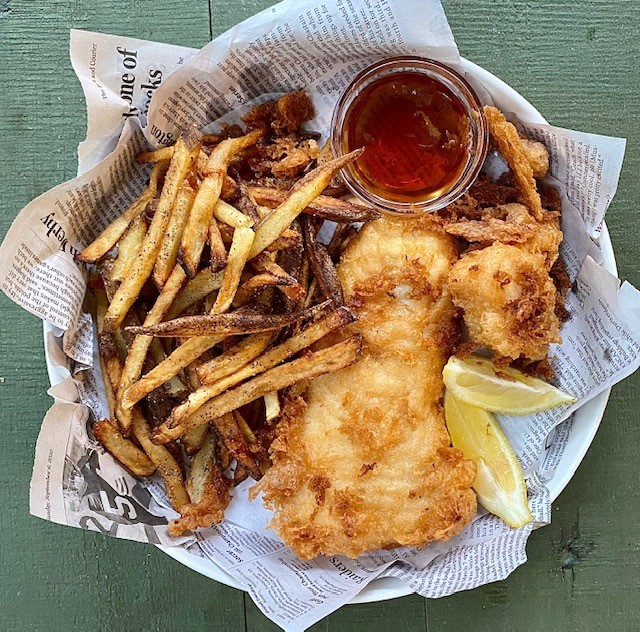

My Home Away From Home 1989-1990
British Fish and Chips
INGREDIENTS
Fish
1 cup all-purpose flour
1 teaspoon baking powder
1 teaspoon salt
1 1/4 cups light beer, very cool
extra flour for dredging, chilled
1 1/2 pounds fresh cod, haddock or other firm-fleshed white fish, cut into 4 pieces
Canola oil for frying
Chips
3 large Russet potatoes or other high starch/low moisture potato, peeled, sliced and put in a large bowl of cold water for 2 hours, dry completely before frying
salt for sprinkling
oil for frying
Quality British Malt Vinegar for serving
INSTRUCTIONS
For or the Chips: Heat the oven to 200 F.
Heat the oil in a deep fryer or a large heavy pan or Dutch oven until the temperature reaches over high heat until it reaches 325 degrees F (use a instant-read thermometer).
Thoroughly drain the sliced potatoes and blot them with paper towels to remove excess water. Once the oil is 325 F carefully fry the potatoes in small batches to avoid overcrowding and fry for 2-3 minutes until pale and softened. Use a slotted spoon to remove them from the oil and let them cool to room temperature.
Increase the temperature to 375 degrees F. Carefully add the fries again, frying in small batches, until they are golden brown and crispy, another 2-3 minutes. Remove with a slotted spoon, place them on a baking sheet or roasting rack, sprinkle with salt while they're still very hot, and place them in the warmed oven while you're frying the fish.
For the Fish: Combine the flour, baking powder and salt in a large flat bowl. Pour in the cold beer and whisk until smooth (use the batter immediately, do not let it rest for a while). In another large flat bowl add some extra flour for dredging.
Blot the fish with paper towels to remove excess moisture. Thoroughly dredge all sides of the fish in the flour and shake off the excess.
Dip the fish into the beer batter to thoroughly coat all sides, allowing some of the excess batter to drip off (but not too much!)
For Frying the Fish: You can either use a deep fryer or you can use a medium-sized skillet and fill it with oil to a depth of about an inch.
Heat the oil to between 350 F and 375 F. Carefully drop the fish into the oil.
Fry the fish in the deep fryer for 5-8 minutes or until nicely golden. If using a frying pan fry the fish for about 2 minutes on each side or until nicely golden. Remove the fish with a slotted spoon, letting the oil drop off, then place the fried fish on a wire rack for a few seconds and serve immediately. (If you wait too long to serve the batter will lose its crispiness.) Don't forget to get all the scraps out of the oil; they are the best part!
